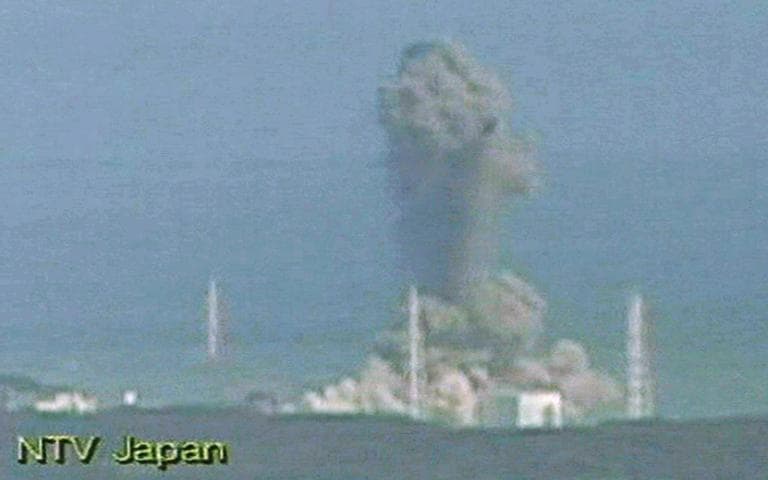Advertisement
Lessons From Fukushima
ResumeYoichi Funabashi, the man who led Japan’s top investigation into the Fukushima nuclear disaster gives us the inside story on a national tragedy.

One year ago this weekend, nuclear nightmare came to Japan. It started with an epic earthquake. Then an epic tsunami. A dark wall of water engulfing the Japanese coast. And then, a triple nuclear meltdown at a place whose name the world would come to know: Fukushima.
A big, new independent report on the crisis lays out how close Japan came to a nationally crippling disaster. We have its top guy. As it is, Japan suffers. Food fears. Evacuees. Abandoned land. Tight energy.
This hour, On Point: the story of Fukushima, and nuclear lessons for Japan – and the United States.
-Tom Ashbrook
Guests
Yoichi Funabashi, chairman of the Rebuild Japan Initiative Foundation and program director of the “Independent Investigation Commission on the Fukushima Daiichi Nuclear Accident.”
Kenneth Cukier, Japan correspondent for the Economist.
David Biello, Energy and Environment editor at Scientific American, his article on the U.S. nuclear industry and the possibility of mass evacuations is here.
Highlights
The devastating earthquake that hit Japan one year ago, pushed the Japanese government to consider drastic options, as radiation spewed from the stricken Fukushima Diiachi nuclear power plant, including the evacuation of Tokyo.
Most frighteningly, if the Fukushima plant had been allowed to spiral totally out of control and the disaster spread to other nearby plants, the world’s largest city would have been in serious danger.
The resulting plume of radiation from of a wider nuclear disaster “could have resulted in the complete evacuation of Tokyo,” said Yoichi Funabashi, who headed a major review of the events surrounding the disaster. “To evacuate 30 million people from the Tokyo metropolitan area would have been impossible.”
“It came closer to a worst-case-scenario than anyone would like to admit,” Funabashi said.
How could Japan have let its nuclear infrastructure get so out of control? Part of the reason, says Funabashi, was a “myth” of regulatory oversight that led both the utility companies and the government to assume that the situation at the plants was better than it was. “At its core, Japan’s nuclear safety regime was so hollow, phony. Regulators pretended to regulate, utilities pretended to be regulated,” he said. “In reality, the regulated were far more powerful, politically and financially.”
Such unbalanced relationships are common – if not universal—in other countries around the world, Funabashi said.
Despite the risks, Funabashi warned against quitting nuclear power cold turkey, urging the gradual replacement of nuclear power by other sources in the coming years.
From Tom's Reading List
The New York Times "In the darkest moments of last year’s nuclear accident, Japanese leaders did not know the actual extent of damage at the plant and secretly considered the possibility of evacuating Tokyo, even as they tried to play down the risks in public, an independent investigation into the accident disclosed on Monday. "
Scientific American "The Fukushima evacuation zone raises the issue of what would happen during an evacuation in heavily populated U.S. metropolises during a nuclear meltdown."
The Guardian 'The remains of the shattered reactors are still some distance away when you first notice the sheer destruction of Japan's nuclear disaster. The journey into the heart of the world's worst nuclear crisis since Chernobyl 26 years ago begins much earlier, in the towns and villages that exist in name only, their residents having been sent fleeing a year ago."
Frontline"The earthquake that shook the Fukushima Dai-ichi nuclear power plant was the most powerful to strike Japan since records began. The company that operates the plant, TEPCO, has forbidden its workers from speaking publicly about what followed. But one year on, they are starting to tell their stories. Some have asked for their identities to be hidden for fear of being fired."
[googlemap title="Map Of The Fukushima Disaster" url="http://maps.google.com/maps/ms?msid=210502556876702873030.00049e7be55b418d5f73c&msa=0&ll=36.522881,139.647217&spn=3.107574,4.938354" width="500" height="400"]
Video: Fukishima Daiichi Nuclear Plant Explosion
On March 12, 2011, cameras captured a massive explosion in the outer structure of the plant's unit 1. Four workers are injured.
Video: International Atomic Energy Commission Site Visit
This is video of a fact-finding mission to the damaged Fukushima Daiichi Nuclear Power Plant on 27 May 2011, the final site visit of the team's effort to identify lessons from the Japanese nuclear accident that could help improve global nuclear safety.
This program aired on March 5, 2012.

